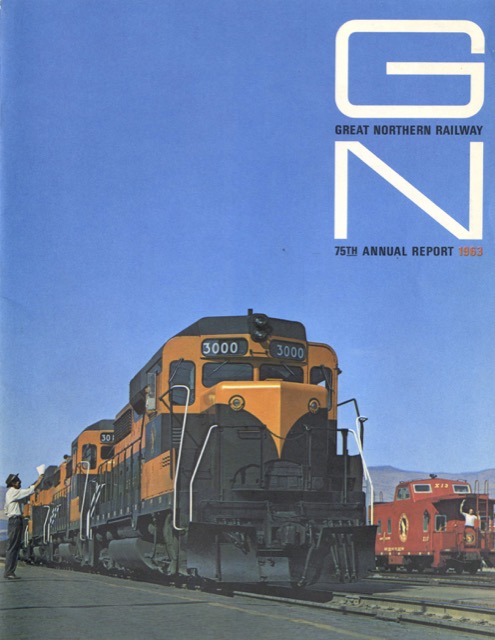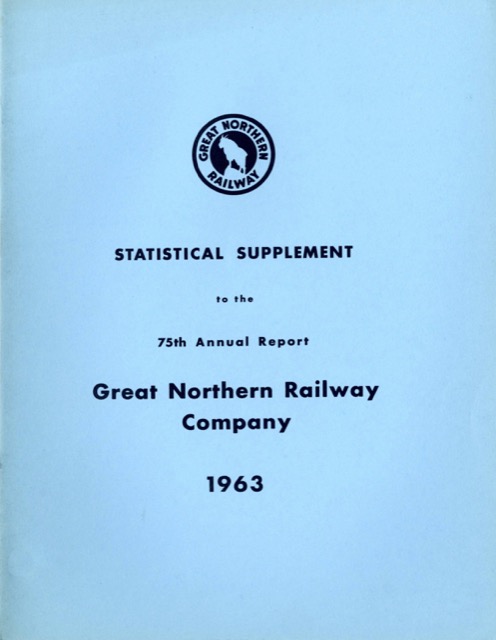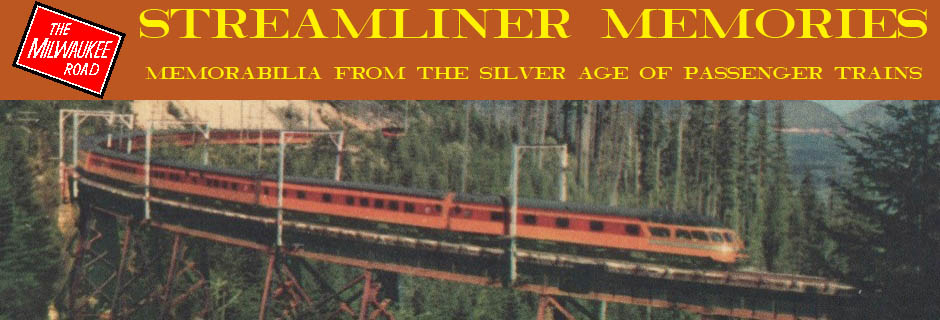Freight revenues grew in 1963 but passenger revenues began an irreversible decline after the boom from the 1962 Seattle World’s Fair. Despite the decline, Great Northern purchased nine “modern” coaches from other railroads to replace older coaches used on GN trains.
 Click image to download an 17.4-MB PDF of this 28-page report.
Click image to download an 17.4-MB PDF of this 28-page report.
The cover of this report shows four GP-30s, the latest locomotive from General Motors. This was a curious locomotive, as it was issued in haste by GM in response to General Electric’s 2,500-horsepower U25B. GM’s previous locomotive, the GP-20, only produced 2,000 horsepower. GM couldn’t manage to get 2,500 horsepower out of its existing engine, so it made one with just 2,250 horsepower.
Many previous GM locomotives had a number that corresponded to their horsepower: GP-15 was 1,500 horsepower, GP-20 was 2,000, etc. But GM didn’t want to call its new engine a GP-22.5 (or GP-23, as it normally rounded up), while GP-25 sounded like a mere equal to the U25B. To make it sound superior, they called it a GP-30. They also asked General Motors styling to design the engine, which gave it a more muscular appearance than previous GM and GE locomotives. The strategies worked, as GM sold more than 900 GP-30s while GE sold fewer than 480 U25Bs. Great Northern, however, bought only 17 GP-30s but 24 U25Bs.
 Click image to download an 9.3-MB PDF of this 20-page report.
Click image to download an 9.3-MB PDF of this 20-page report.
